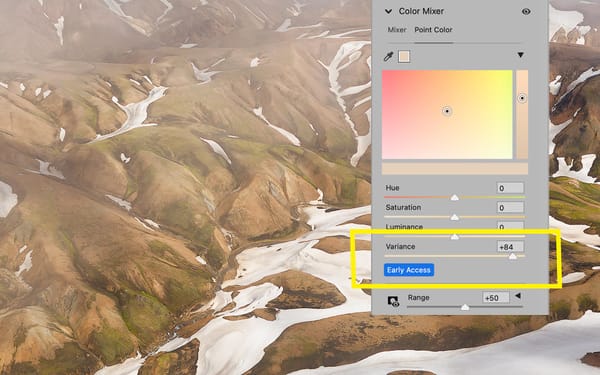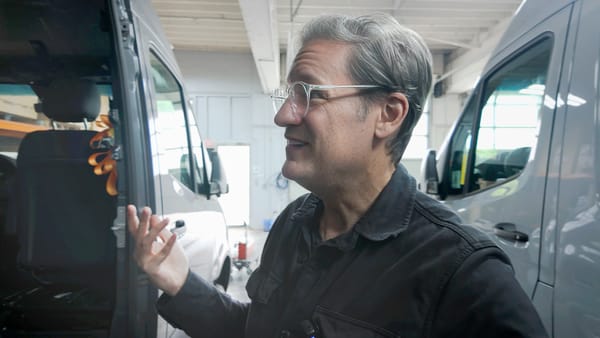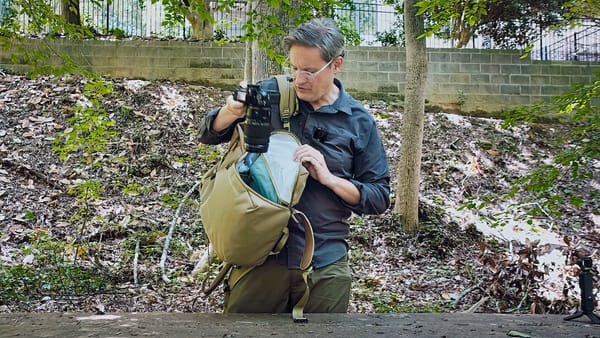Getting acquainted with the Fujifilm GFX 100s
First impressions of Fuji's super high megapixel digital medium format camera, what led me to buy one, and how it compares to what I've been using

For years I've been a committed Canon shooter. I began my photography journey with an entry level Rebel, grew into the 6D, 7D, 5D Mark II and IV, then made the jump to mirrorless with the EOS R5 and R6. Of them all, the 5D Mark IV and R5 have been especially fantastic thanks to their rugged build quality, dependable performance, and great photos and videos.
However, in the last year, I've started to wonder if the R5 is truly the optimal camera for the type of photography I do (landscapes). Although the R5 produces excellent photos and videos with its impressive 45-megapixel sensor, I've noticed that I rarely use images at full resolution. I often crop the R5's full frame, 3:2 images to 4:3 or 4:5 to make them feel less elongated, calmer, and more balanced. This is especially true with 2:3 vertical/portrait images that almost always feel too tall. At times, I also crop aggressively to use small areas of much larger images.
Cropping improves my compositions and creates images I'm happier with creatively, but also removes megapixels. My cropped 45 megapixel raw files become 35, 30, 25 or smaller. If I made a print of a 25 megapixel image, the largest paper size I could print to (without upscaling) is 13x19" (A3+). That's a good size for my home printer, but anything larger printed by a lab would require upscaling (using software like the excellent Topaz Photo AI).
I'm not against upscaling, and have produced decent results doing so, but if I had a choice, I'd much rather print photographs at their original size (or smaller) than printing upscaled, low resolution images containing interpolated, non-native pixels.
This is what finally persuaded me to pick up a used Fujifilm GFX 100s, a digital medium format camera with a native, 4:3 image aspect ratio and 102 megapixel CMOS image sensor. For comparison, an un-cropped 4:3 image from the GFX 100s can create a 58"/147cm wide print (!) at 200 dpi, which is sufficient resolution for viewing up close. I could also print even larger for images that would be viewed primarily at a distance.
Additionally, I may never get a second chance to photograph some landscapes, and if I'm going to go through the cost and effort of creating work I'm proud of, I believe it makes sense to shoot at the highest resolution I can possibly afford (which, thankfully, was attainable thanks to Fujifilm's recent sale on GFX camera bodies and GF lenses, which indirectly helped lower used prices).

First impressions of the GFX 100s so far? Well, first thing I noticed is how different the body looks and feels. The hard plastics are smooth and glossy, with sharp, angular edges in some places. The body reminds me of a chunky DSLR like the Canon 1D. The GFX 100s certainly looks bigger and heavier, but weighs only a half pound more than my EOS R5, which isn't terrible. Not thrilled about increasing the weight of my camera bag, but it'll have to do.
I also picked up two used lenses: the GF 32-64 and 100-200 (35mm equivalent, 25-51mm and 79-158mm respectively). 24mm is about as wide as I normally like to shoot in full frame, so I think the 32-64 will suit me well for the time being. 100-200 also feels like a good range, for its focal length doesn't overlap the 32-64, and I would rarely need a longer focal length when shooting landscapes.
As expected, 100s raw files are HUGE (101mb each, 2x the size of my EOS R5 raw files). I have plenty of available storage, but I suspect I'll be shooting more deliberately and carefully (similar to film) with the 100s to conserve disk space; especially with my SD cards, which I expect to fill up much faster than I'm accustomed to.
Will I continue using Canon? Absolutely. I'm not thrilled by the cost and hassle of maintaining two camera systems (and all the lenses and accessories they require), but I plan to continue using my Canon cameras for video and general purpose photography. Basically, anything the 100s would be overkill for.
My first true landscape photography experience with the 100s will be a few weeks from now in the American west, where I plan to shoot some comparison images against the R5, plus some new "from the field" videos as well. If anyone reading this owns a 100s and has tips/recommendations for a newcomer like me, please reach out and share.



